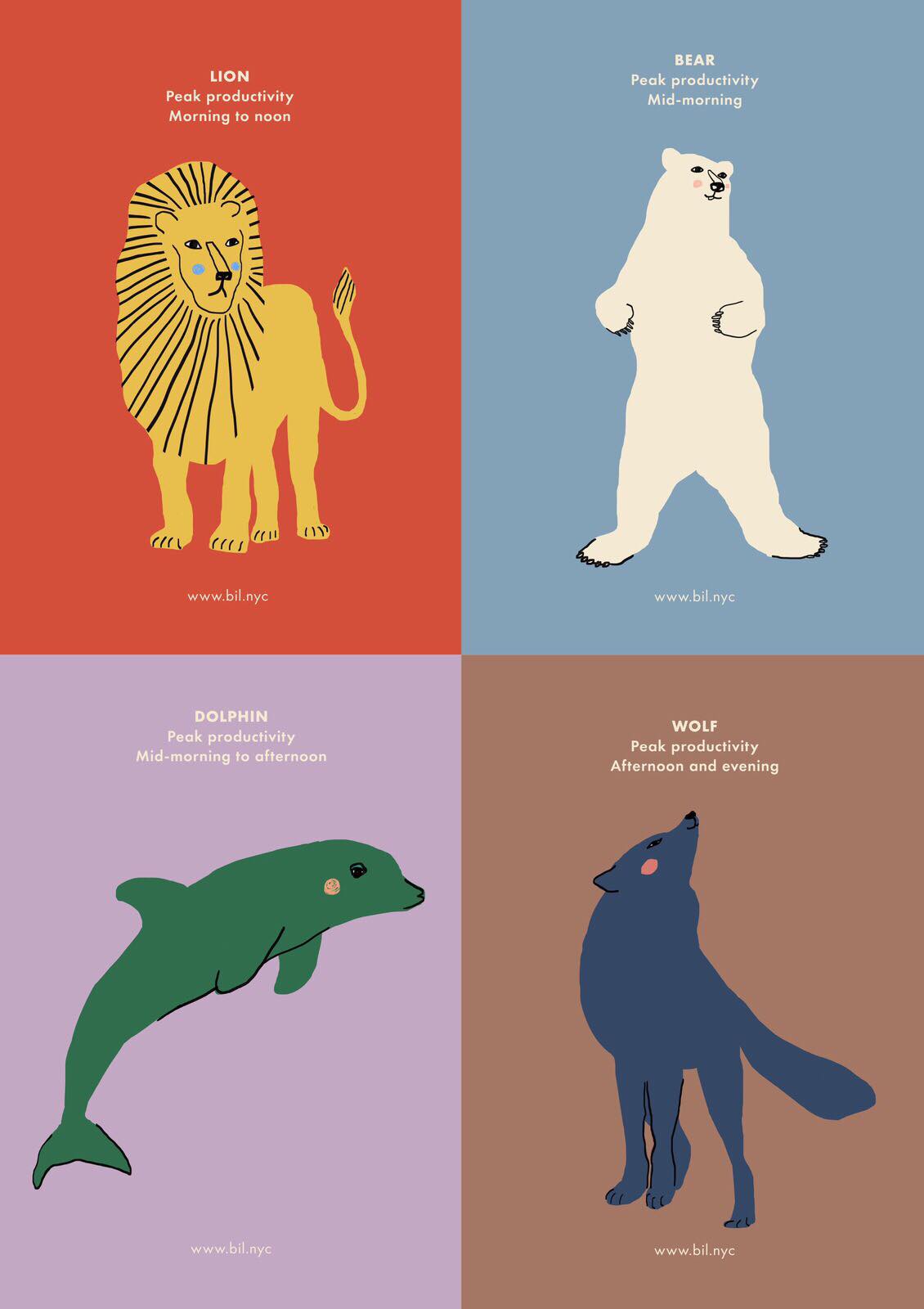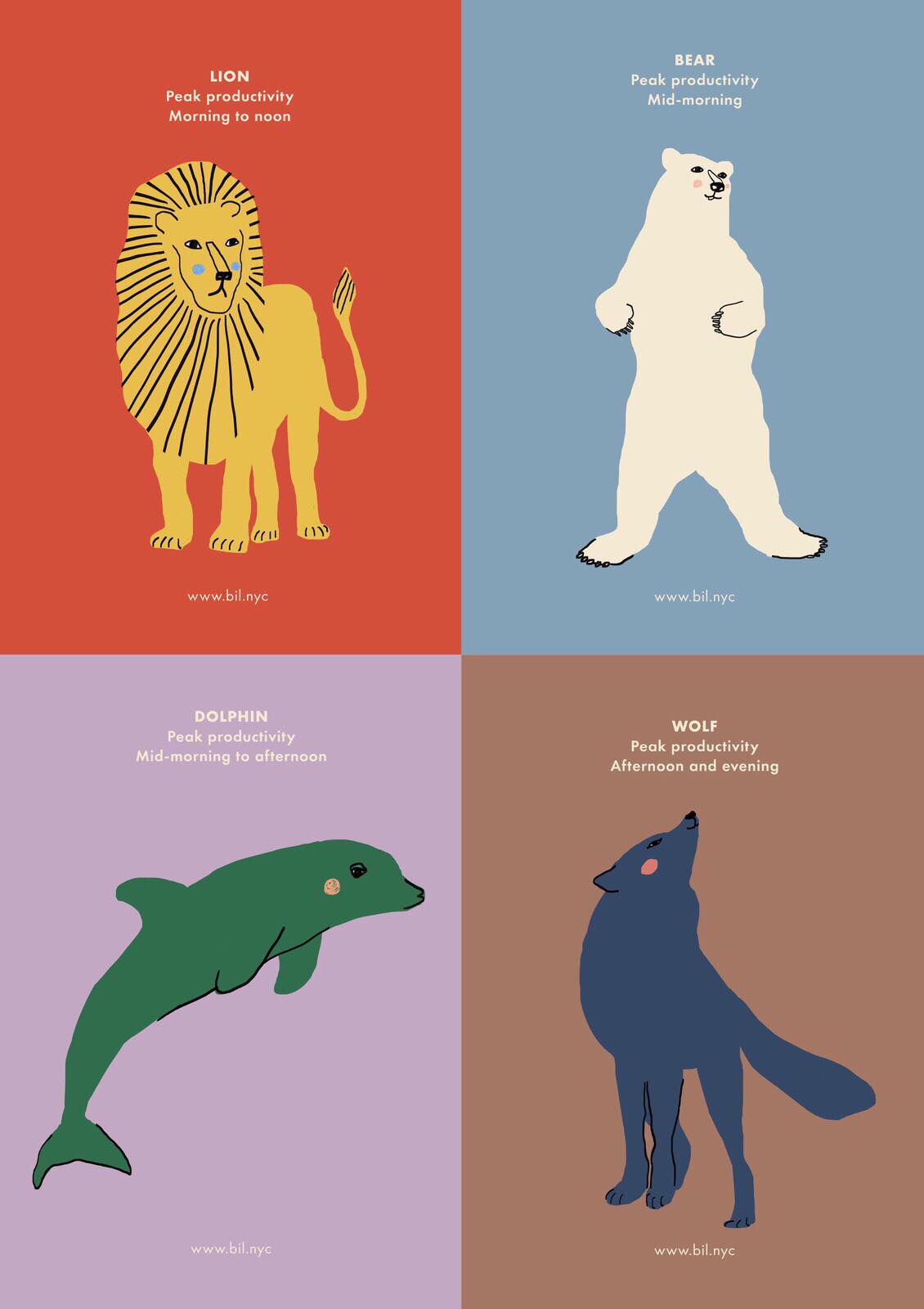For peak performance understand your productivity style.
The past ten years of productivity coaching have shown me that productivity is not just about getting things done. It is also about understanding my clients and creating a path to wholeness, where every aspect of their lives work together in harmony.
There are a few aspects to consider on your path to creating your own productivity style.
Let’s start with knowing your chronotype.
“Chronotype” is the scientific term for your body’s internal clock. We often talk about our internal clock in terms of our natural inclination to fall asleep and wake up at certain hours of the day (Book came up about it ). Chronotypes govern many aspects of your life and knowing what yours is will make your life not only more productive but more joyful. Your personal chronotype impacts what time of day you’re the most efficient, creative, less focused and much more.
Take the test to know your chronotype.
Based on Michael Breus’ book, “The Power of When”, there are 4 chronotypes.

Before Dr.Breus, Daniel H.Pink talked about chronotype and provided the science behind it in his book, “When: The Scientific Secrets of Perfect Timing”.
According to Pink (and the hundreds of scientific studies), everyone—people of all ages, genders, and races, and across all geographic locations and time zones—experiences three productivity phases over the course of every day:
- Peak
- Trough
- Rebound
For most people, it looks like this:

From the standpoint of productivity, it is essential to know when is your peak productivity time and because it allows you to plan to do your most essential tasks in your peak hours and the rest of the hours do the tasks that may need less focus and attention.
An important thing to remember is that most of the time our chronotypes are created by life circumstances. I became a morning person due to my spiritual practice, and due to my cat who wakes me up around 5:30 am. Similarly, being single allows me to go to bed at 10 pm so I can wake up early and meditate.
“To determine your chronotype, imagine that you have two weeks of vacation to spend as you like, with no evening or morning commitments and no pets or children to wake you. Chronotypes reflect habits as well as biology, so you would also need to eliminate caffeine and avoid artificial light at night, which pushes a person’s chronotype later. At what time would you tend to fall asleep and wake up? Don’t be surprised if you’re unsure. After years spent accommodating work, family and social commitments at the expense of sleep, “a lot of people don’t know what rhythm they have,” Ms. Kring said.”
With a change in life circumstances, our chronotype can change as well. It changes with age and life priorities as well. It is good to pay close attention to yourself and plan your tasks according to your peak productivity time as it will allow you to boost your productivity and achieve much more in less time.
Design credits: Olya Tsikhanchuk.


